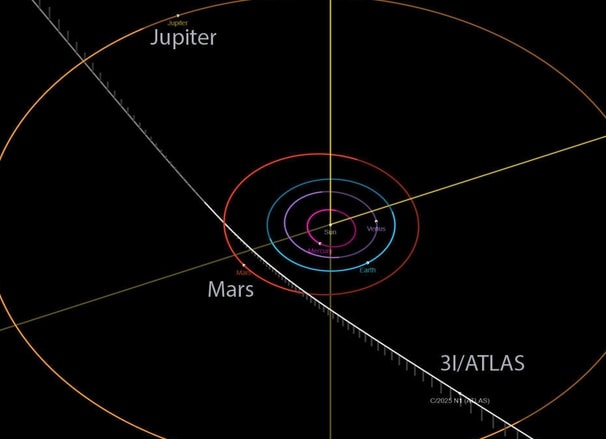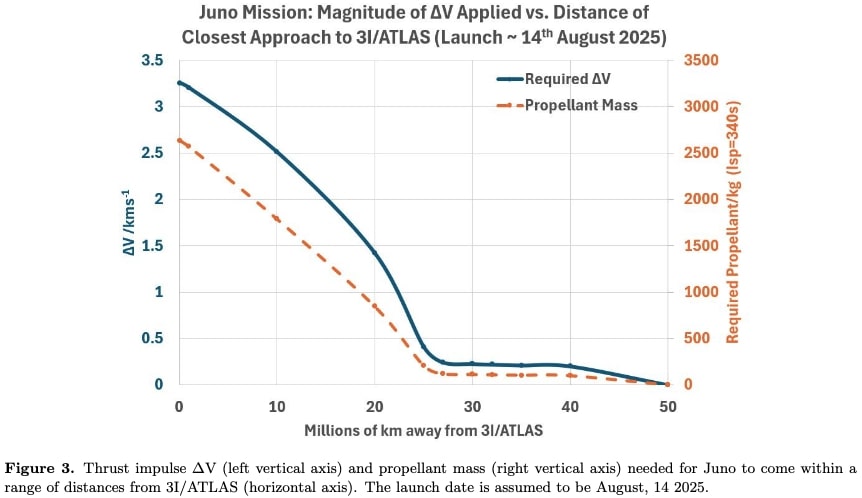Now Reading: 3I/Atlas Observation: Juno vs. James Webb Analysis
-
01
3I/Atlas Observation: Juno vs. James Webb Analysis
3I/Atlas Observation: Juno vs. James Webb Analysis

Speedy Summary
- Observation proposal: A repurposing of NASA’s Juno spacecraft to observe the rare interstellar object 3I/Atlas is being considered due to its nearing mission end (~September 2025).
- Scientific Value of Juno:
– Offers ~20-24x better angular resolution for capturing finer features like jets or tail asymmetry due to proximity (~25 million km during flyby).
– Improved detection (500-1,000x brightness boost, magnitude ~4-6 vs. JWST’s magnitude ~12-14) for short exposure observations.
– Instruments onboard include visible imaging (JunoCam), infrared spectrometry (JIRAM), ultraviolet spectra mapping (UVS), and dust impact monitoring.
– Can complement JWST’s deep-space sensitivity by capturing dynamic outgassing, phase-angle effects, and fine dust environments.
- James Webb Telescope Role:
– Best suited for detailed chemical analysis of interstellar nucleus composition-e.g., isotopes, ancient carbon-rich materials.
– Resolves gas/dust coma structures up to hundreds of thousands of kilometers but unable to detect finer active details at a distance (~450-600 million km).
Indian Opinion Analysis
The proposal demonstrates how legacy space assets like Juno can be creatively repurposed for high-impact science. Observing the rare interstellar object-3I/Atlas-not only advances our understanding of ancient galactic materials but also offers insights into the dynamism in solar system comas via real-time data capture. The synergistic use alongside James Webb Telescope illustrates pragmatic allocation between high-resolution local imaging versus long-range deep-spectrum analytics.india should closely track thes advancements as they offer crucial learnings on optimizing space resources at mission endings-a principle applicable nationwide given ISRO’s own upcoming projects like Chandrayaan and Aditya series. As an example, such dual-platform approaches could maximize scientific yields with efficient resource use as India’s ambitions grow in planetary defense research or asteroid mining prospects.

























